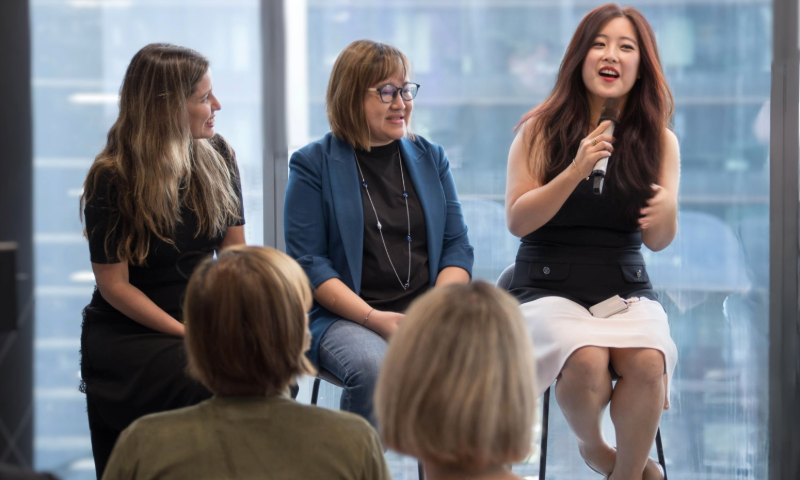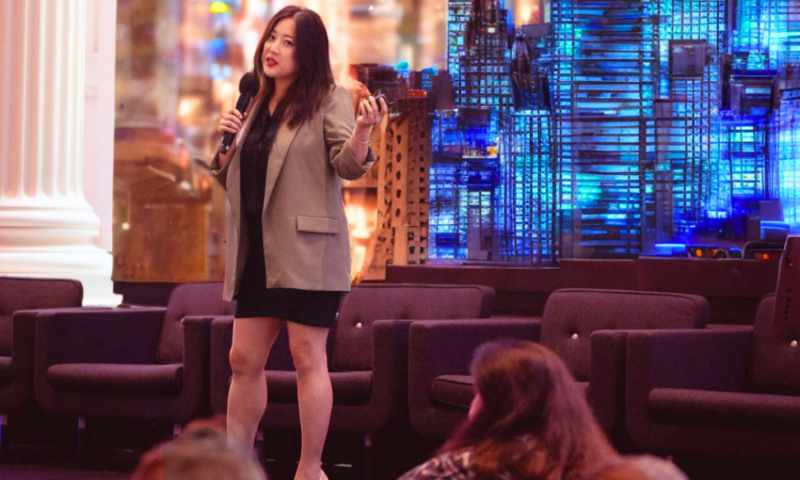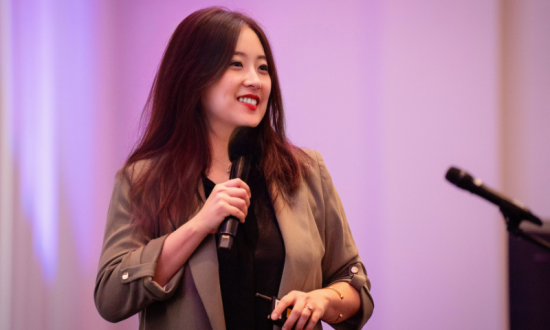A visionary influencer, Shamane Tan is passionate about uniting minds and experiences, excelling in aligning C-Suite and Board members with cyber security imperatives. As the author of “Cyber Risk Leaders,” she unravels executive communication nuances and distills C-Suite expectations. Her work extends to “Cyber Mayday and the Day After,” a roadmap for navigating crises by mining the wisdom of C-level executives from around the globe. It’s filled with interviews with managers and leaders who’ve braved the crucible and lived to tell the tale. Her most recent book, “Building a Cyber Resilient Business: A Cyber Handbook for Executives and Boards,” was featured on Forbes Australia’s top list of books for CEOs.
Shamane has also founded a transcontinental cyber risk and executive meetup spanning Sydney, Melbourne, Perth, Singapore, the Philippines, and Tokyo, fostering mentorship, women’s empowerment and thought leadership. As a strong advocate for the importance of having a voice and helping others use theirs, Shamane Tan has spoken at TEDx, global conferences and Fortune 500 and ASX companies like MasterCard and Atlassian, the Parliament of New South Wales, FS-ISAC, RSA, ISACA Silicon Valley and many more.
Recipient of the IFSEC Global Top 20 Cybersecurity Influencer award and named among the 40 under 40 Most Influential Asian-Australians, Shamane is also the Chief Growth Officer at Sekuro, a leading cyber security and digital resiliency solutions partner, and leverages her unique fusion of technical prowess and business acumen to help organisations progress on their security maturity journey.
Recently, in an exclusive interview with Digital First Magazine, Shamane shared her professional trajectory, the major takeaways from her global best-selling book, the best piece of advice she has ever received, future plans, words of wisdom, and much more. The following excerpts are taken from the interview.
Hi Shamane. Please tell us about your background and areas of interest.
My journey in cybersecurity is a blend of curiosity and strategic engagement, where I focus on aligning cybersecurity imperatives with C-suite and board members’ priorities. I am passionate about simplifying the complexities of cybersecurity, fostering diversity in the field, and promoting mentorship and leadership within the tech community.
What do you love about your current role as Chief Growth Officer at Sekuro?
I really enjoy driving strategic growth and innovation in cybersecurity! I am always up for any opportunity to engage both my technical and business expertise if it means helping organisations enhance their security maturity. Building relationships and fostering partnerships that align with Sekuro’s mission of delivering end-to-end cyber solutions is what I find incredibly rewarding.
Please share the major takeaways from your book, ‘Cyber Mayday and the Day After’.
In global bestseller “Cyber Mayday and the Day After,” my co-author Dan Lohrmann and I emphasise the criticality of preparedness and resilience in cyber crisis management. The book is a compilation of insights from C-level executives who have navigated cyber crises, showcasing the need for strategic crisis management and integrating cybersecurity into business continuity plans. ‘Cyber Mayday and the Day After’ addresses the actions we need to take ‘pre-Cyber Mayday’, all the way to the actual behaviour that shows up during ‘Cyber Mayday’, and finally, in the ‘Day After’, examines the keys that all leaders need to be mindful of in achieving business resilience.

You are the Founder of CXO Tribe. Can you please tell us about this community and its vision?
I founded CXO Tribe to create a platform for C-suite executives to collaborate on cyber risk management. The vision is to establish a global network of leaders who can collectively strengthen the cybersecurity field through shared knowledge, mentorship, and thought leadership, fostering a proactive approach to cyber risk management.
Women aren’t the only underrepresented group in tech – what can be done to make tech more diverse across race, class, and gender?
Achieving diversity in tech requires a multifaceted approach. It’s not just about opening doors for underrepresented groups but also about creating an environment where everyone can thrive. From my perspective, this involves several key strategies. First, education and awareness are crucial; we need to inspire and engage people from diverse backgrounds early on, highlighting the opportunities and fulfilling careers available in technology. Inclusive hiring practices are another essential element.
Once individuals are hired, support mechanisms like mentorship programs, diversity training, and career development opportunities can help retain and nurture talent. Creating spaces for underrepresented groups to share their experiences, challenges, and successes can foster a sense of belonging and community. Finally, the tech industry needs to celebrate and recognise the achievements of individuals from diverse backgrounds, showcasing them as role models and sources of inspiration for others. Highlighting success stories can challenge stereotypes and change perceptions, illustrating that talent exists in every community and that the tech industry is enriched by embracing diversity in all its forms.
In your academic or work career, were there any mentors who have helped you grow along the way? What’s the best piece of advice you have ever received?
My career has been significantly influenced by mentors who saw my potential and encouraged me to delve into cybersecurity. The best piece of advice I’ve received is to harness my unique perspective and strengths, which has helped me navigate my journey with resilience and purpose.
This guidance perfectly aligns with my ABCDs of career resilience, a framework I developed to embody the core principles of my professional journey.
The “A” for Assess speaks to understanding one’s unique value and strengths, just as I was advised. It’s about looking inward to recognise the distinctive perspectives I bring to the table, evaluating how these can be applied to meet the challenges and opportunities within the cybersecurity landscape.
The “B” for Brave involves leveraging these strengths to step into new territories or undertake challenging projects. Embracing my unique skills empowers me to confidently face situations that might initially seem daunting, embodying the bravery to break new ground and lead with assurance.
“C” for Calm relates to the resilience aspect of the advice. It’s about maintaining composure and purposefulness in the face of challenges, ensuring that my perspective is not clouded by the stress or complexities of the moment. Staying calm allows me to effectively apply my strengths in any situation, making strategic decisions with clarity and confidence.
Lastly, “D” for Dedicate resonates with the idea of purposeful navigation through my career. It signifies the commitment to continuously develop and apply my talents, ensuring that my professional journey is not just about achieving goals but also about fulfilling a larger vision and purpose in the cybersecurity field.
This advice to harness my gifts has become a cornerstone of my ABCDs of career resilience, guiding me through the complexities of the tech industry with a clear sense of identity and purpose.

The meaning of leadership can change from one era to the other, how would you define the meaning of leadership today?
I define leadership as the ability to influence and inspire those around us, while actively contributing to raising the next generation of leaders. It’s about much more than holding a position of authority; it’s about creating a legacy of empowerment and opportunity. Leadership is the ability to inspire others to drive positive change, both within and outside an organisation.
True leadership is about nurturing talent, promoting inclusivity, and leading by example in innovation and ethical practices. It’s about building a foundation of knowledge and experience that others can draw upon, ensuring the legacy of leadership continues to thrive and evolve in the changing landscapes of industries like cybersecurity.
In my view, leadership today is synonymous with influence, mentorship, and the sustainable development of future leaders, ensuring that the progress and achievements of today pave the way for the successes of tomorrow.
What is it that motivates and inspires you in your everyday life?
Cybersecurity is constantly evolving it’s one of the most dynamic fields to be in. I love the challenge of continuous learning and the creativity of innovation. I am inspired by the opportunity to effect meaningful change within the cybersecurity community and am a passionate builder of collaborative platforms that tackle our industry’s inherent challenges.
My advocacy for inclusivity drives my efforts to cultivate a more diverse and equitable tech landscape. My purpose revolves around raising the level of cybersecurity awareness all the way from the business leaders to the families in communities, while promoting diverse talent within the tech industry, and contributing to the growth and resilience of the community.

Fun fact about you?
A few fun facts – many know me for my passion for travel. I love immersing myself in new cultures and environments, which refreshes and enriches my strategic thinking and creativity. Some might also know of my fascination with generative artificial intelligence and its myriad possibilities. I love dabbling with different AI use cases, which allows me to extend my creative vision in different ways. AI has become a canvas for my imagination, enabling me to explore and express my artistic sensibility through design. This intersection of technology and art not only fuels my curiosity but also brings a fresh perspective to my creative endeavours.
Where do you see yourself in the next 5 years?
In the next five years, I envision myself leading with creativity at the forefront, bridging the gap between technical and business leaders in the CxO space. My goal is to effectively translate complex technical challenges into strategic business solutions. By fostering innovation and leveraging my unique blend of technical knowledge and business insight, I aim to drive transformative change, making cybersecurity more accessible and actionable for C-suite executives and board members. I will continue to commit to mentorship, diversity, and inclusion, inspiring a new era of cybersecurity professionals who are well-equipped to navigate the evolving digital landscape.
What advice would you give to women who want to enter the tech industry?
Embrace your voice, find your tribe in community, and seek mentors. It’s important to be resilient, continuously learn, and advocate for oneself and others, striving for a tech industry that values diversity and inclusion.






